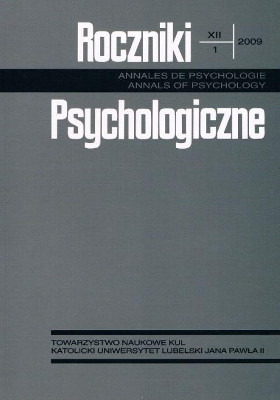Further Thoughts on the Psychology—Biology Relationship
Abstract
In concluding this response, I must say that at times I have found myself uncomfortable juxtaposing psychology and psychological with biology and biological, as if one precludes the other or the two are in competition with one another. There is much in psychology that is biological and, as Wolski suggests, much in biology that is psychological. As Strelau suggests, rather than being viewed as in competition with one another or as one having hegemony over the other, it seems most profitable to view phenomena as capable of being understood at different levels with utility in the conduct of research on the relations among levels.
References
Kahneman, D. (2003). A perspective on judgment and choice: Mapping bounded rationality. American Psychologist, 58, 697-720.
Magnusson, D. (1999). Holistic interactionism: A perspective for research on personality development. In L.A. Pervin & O.P. John (Eds.), Handbook of personality: Theory and research (pp. 219-247). New York: Guilford.
Magnusson, D., & Bergman, L.R. (2000). Individual development and adaptation: The IDA program. In C.G. Janson (Ed.), Seven Swedish longitudinal studies in the behavioral sciences (pp. 115-139). Stockholm: Swedish Council for Planning and Coordination of Research.
Pervin, L.A. (1983). The stasis and flow of behavior: Toward a theory of goals. In M.M. Page (Ed.), Personality: Current theory and research (pp. 1-53). Lincoln: University of Nebraska Press.
Pervin, L.A. (2002). Current controversies and issues in personality. Hoboken, NJ: Wiley.
Suomi, S.J. (2006). Risk, resilience, and gene x environment interactions in rhesus monkeys. Annals of the New York Academy of Science, 1994, 52-62.
Copyright (c) 2009 Roczniki Psychologiczne

This work is licensed under a Creative Commons Attribution-NonCommercial-NoDerivatives 4.0 International License.


